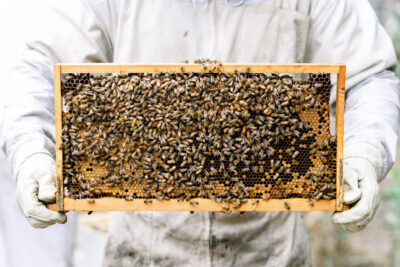
Nature’s Maximizing Returns
Posted on March 27, 2024
Honey bees are coming into the Spring hot! And by this we mean in numbers. Bees will to begin to multiply and iHoney bees are coming into the Spring hot! And by this we mean in numbers. Bees will begin to multiply, increasing the population of the hive in late January as the days are slowly beginning to lengthen. With more sunlight in the northern hemisphere, comes more blooming of flora. By combining their higher numbers of bees, timed with the most blooms we see during the Spring, nature has positioned itself to maximize the returns on pollen and nectar production. This way, each hive has situated itself for the remainder of the year to make it through the more difficult months in the Fall.
We all know the popular varieties of honey in the Spring: sage, orange blossom, avocado, almond. But its the ground flora and blooms we see in the hills providing most of the nourishment to the bees at this time. In essence – the wildflowers! With so much pollen and nectar available, strong hives will create a surplus of honey. Beekeepers can use this to their advantage by taking just the surplus of honey made while retaining the health and integrity of the hive.
In the Spring, stronger hives will naturally attempt to multiply and create a second hive to again capitalize on the returns of nature. This is when swarms are most commonly seen throughout the year. And again, the bees and nature attempting to maximize their returns.
-MH Co.
